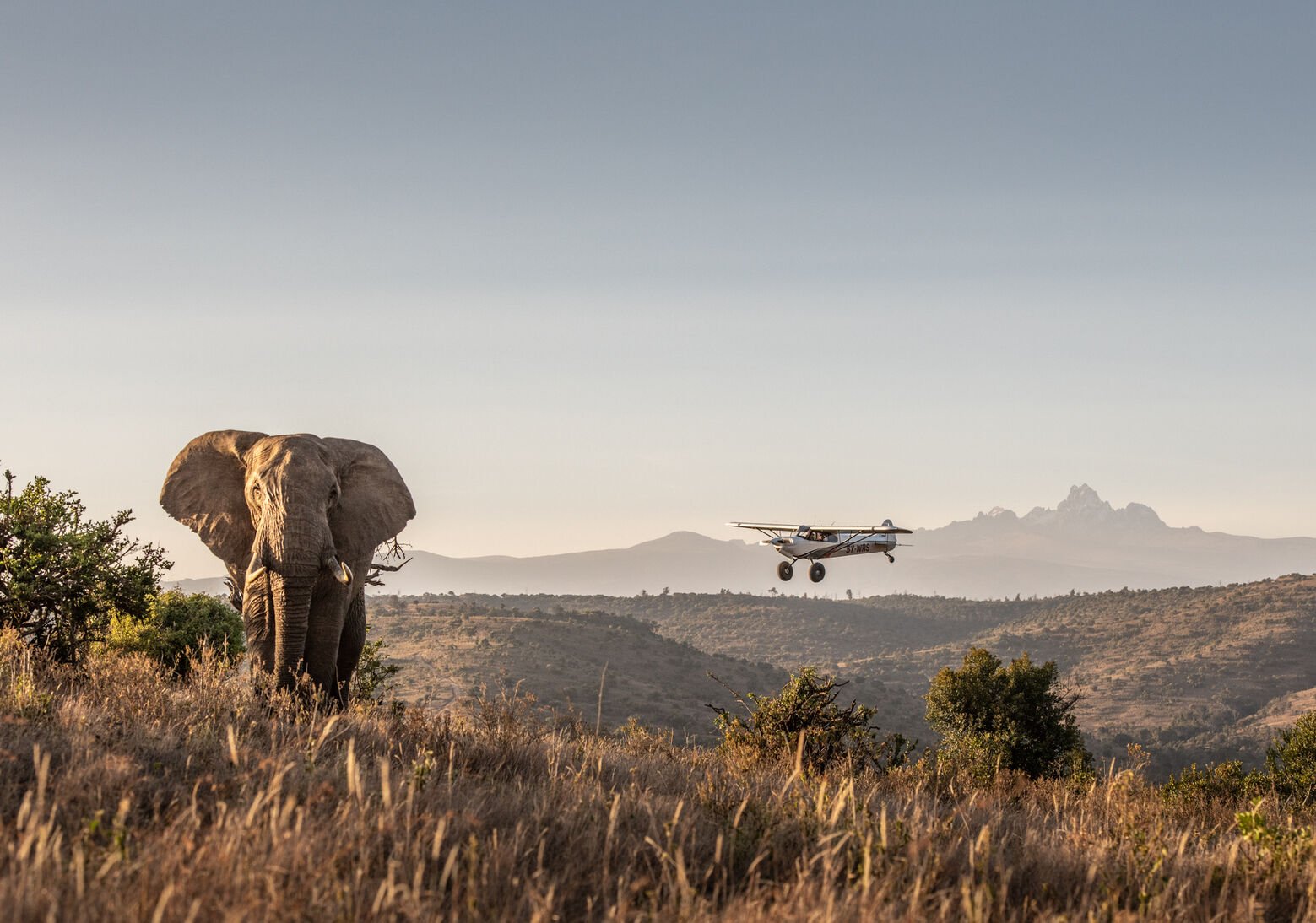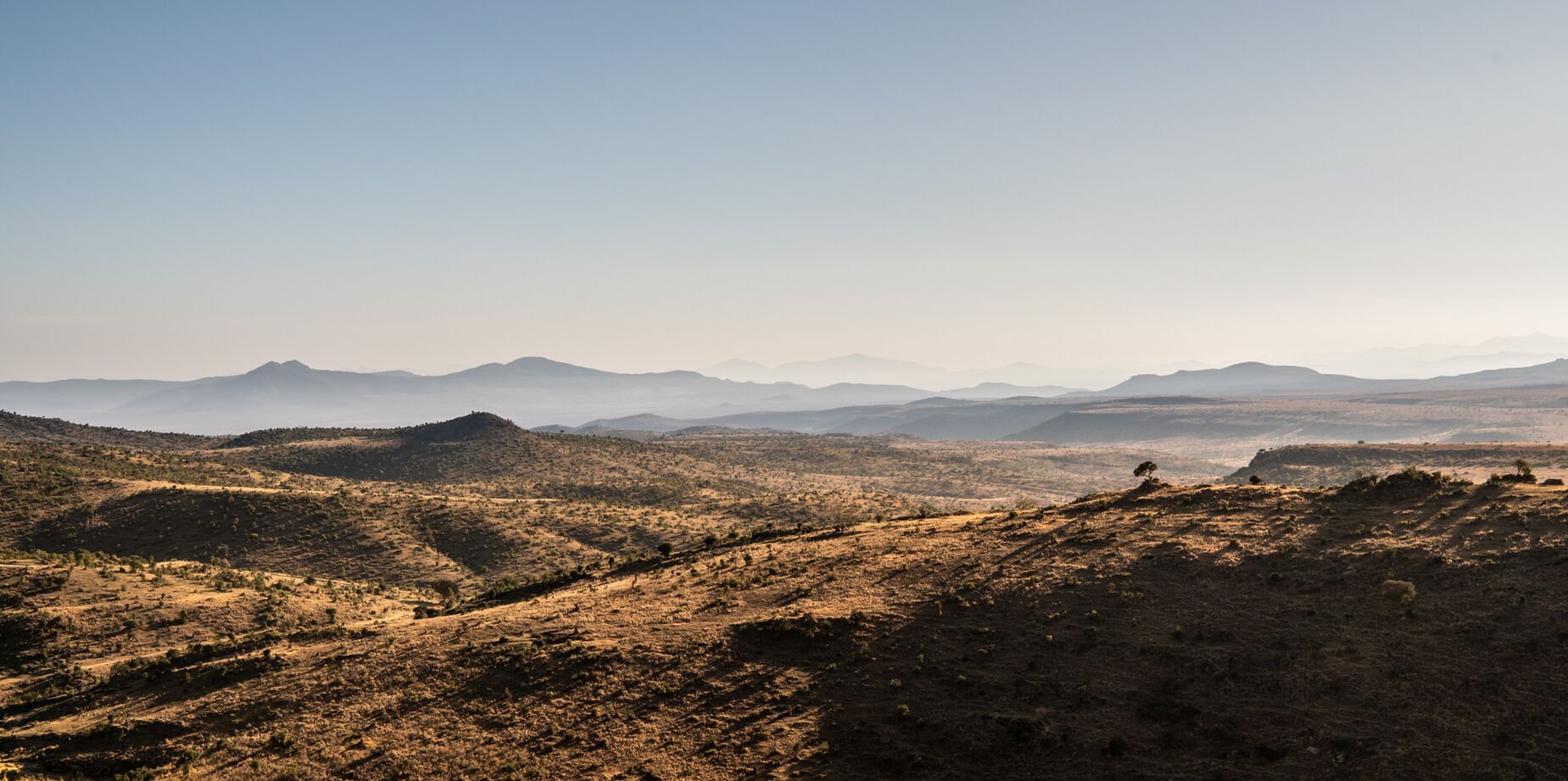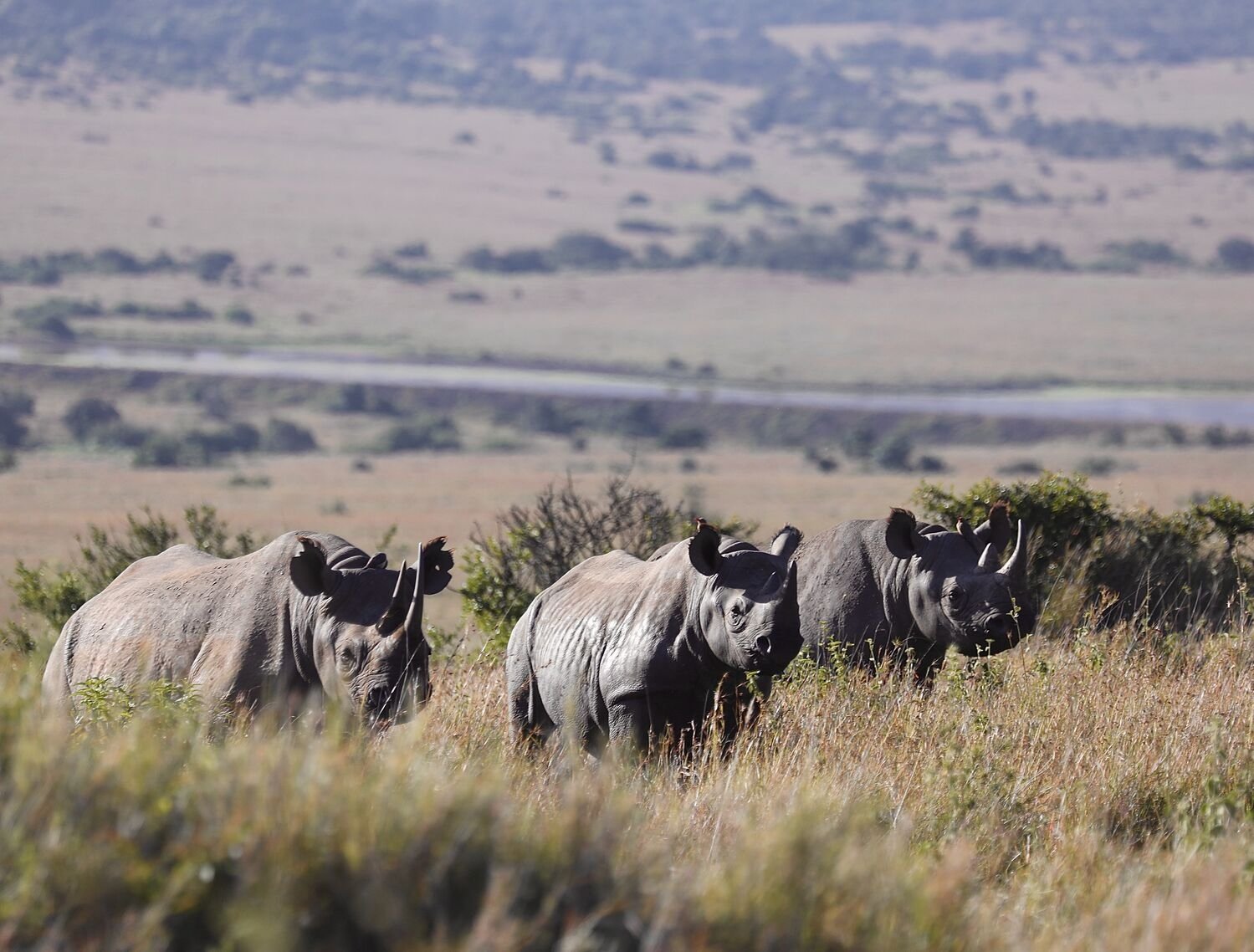
Increasing the conservation landscape available for wildlife is one of our underlying missions
Biodiversity Monitoring
Borana is part of the wider Laikipia-Ewaso ecosystem which holds the highest diversity of large mammal species of any ecosystem of its size in the world. Borana is home to elephant, Black and White Rhino, cheetah, lion, wild dog, Jackson’s hartebeest, reticulated giraffe, Grevy’s zebra and many other endangered species.
Recurring bio-diversity monitoring and annual species surveys are conducted with comprehensive action plans in place to protect species on the brink of extinction. Securing and expanding much-needed safe habitats and increasing the conservation landscape available for wildlife is one of our underlying missions.
The most urgent challenge we currently face is to secure further safe habitat. We are embarking on a programme to expand the rhino habitat available in partnership with the Kenya Wildlife Service.
There has recently been successful a translocation of Rhino to the newly established Loisaba Conservancy and support continues to Il’Ngwesi for rhino, which is adjacent land owned by the Il’Ngwesi Maa community. This will mean that Rhino will have access to the Lewa-Borana Landscape along with state-owned Ngare Ndare Forest and community-owned land, Il Ngwesi.
Black Rhino Translocation
-

Context
Kenya’s black rhino population has grown significantly, surpassing 1,000 individuals, more than double the population recorded in 1989. However, to reach the long-term goal of 2,000 black rhinos across the country, finding more space for the species to thrive has become critical. In regions such as Laikipia, where rhino populations are successfully growing, overcrowding presents new challenges. When rhino numbers outgrow their available habitat, access to resources such as food, water, and territory become limited, leading to a decrease in birth rates and increased competition. To address this issue, Kenya Wildlife Service (KWS) and its partners launched the National Rhino Range Expansion project, aimed at creating more space for black rhinos to continue growing their numbers. This effort led to the establishment of a new black rhino population in Loisaba Conservancy in January 2024, located in Laikipia County, Northern Kenya.
-

Selection
After identifying Loisaba Conservancy as a suitable location, careful planning went into selecting the rhinos for translocation. Loisaba spans 58,000 acres and is well-secured, with a proven commitment to conservation. In partnership with experts from various conservation organizations, KWS selected 21 Eastern black rhinos from three different conservation areas across Kenya. These included 12 rhinos from the Lewa-Borana Landscape, six from Ol Pejeta Conservancy, and three from Nairobi National Park. A balanced mix of healthy males and females were chosen, ensuring the founding population had the best chance of long-term success in its new home.
-

Translocation
The translocation of the black rhinos to Loisaba required years of planning and months of intense preparation. The operation involved habitat suitability assessments, security improvements, and the development of infrastructure to support the new rhino population. Despite multiple delays caused by weather conditions, the rhinos were successfully moved in January 2024, marking the first major black rhino translocation in several years. The operation, led by KWS, also included support from public donors, the US Government’s Bureau of International Narcotics and Law Enforcement, and the US Fish and Wildlife Service. As the rhinos settle into their new environment, they are under constant 24/7 monitoring by dedicated rhino rangers to ensure their safety and adaptation.
The successful translocation of 21 black rhinos to Loisaba Conservancy is a significant achievement in Kenya’s conservation efforts. It not only relieves overcrowding pressures in the Lewa-Borana Landscape but also creates new opportunities for the black rhino population to grow in a safe and well-managed environment. As part of Kenya’s broader National Rhino Range Expansion project, this initiative sets the stage for continued progress towards doubling the country’s black rhino population. With ongoing support from conservation partners and constant monitoring, the Loisaba rhinos are well-positioned for future success, and the project marks a positive step forward in black rhino conservation in Kenya.
We are now identifying rhino candidates for translocation to Segera which we anticipate will be ready in Q2 of 2025.
EARTH RANGER -
EARTH RANGER -
Early in 2023, in collaboration with KWS, 42 Rhinos (20 black and 22 white) were successfully ear-notched and six were equipped with LoRaWAN transmitters which are tracked on the EarthRanger platform.
The Conservancy has recently deployed 15 AI-driven camera traps, in partnership with Wildlife Protection Solutions (WPS), monitoring our gates and wildlife corridors. When a camera is triggered the image is transmitted to WPS where it is then scanned by AI software that identifies what was captured. The AI then transmits the image to Earth Ranger in the form of a report that is prioritized based on the contents of the image, for example red (high priority) for humans, vehicles, rhinos or green (low priority) for a buffalo.
All of this data can be used to generate heat maps of rhino sightings to inform ranger deployments, identify weak spots in the boundary fence that could lead to human-wildlife conflict and ensure that there is adequate patrol coverage in our rhino monitoring efforts. In short, proper data collection through Earth Ranger combined with analysis using Tableau (a visual analytics platform) enables quick informed decision-making and reporting for management.
Earth Ranger is a protected area management tool that provides a centralised visual database. It enables us to input data covering everything from Rhino sightings, and human-wildlife conflict reports to invasive plant mapping. It also acts as the endpoint for sensor data through the conservancies LoRaWAN network; a low-power, wide-area networking protocol. This helps monitor assets and keep ranger safe.
Borana is primarily using the network to transmit tracking data for wildlife monitoring, vehicle movements, patrol coverage and livestock grazing patterns. We are also in the process of trialing sensors for monitoring fence line voltages as well as tank level and flow rate monitors for water reticulation across the conservancy.






